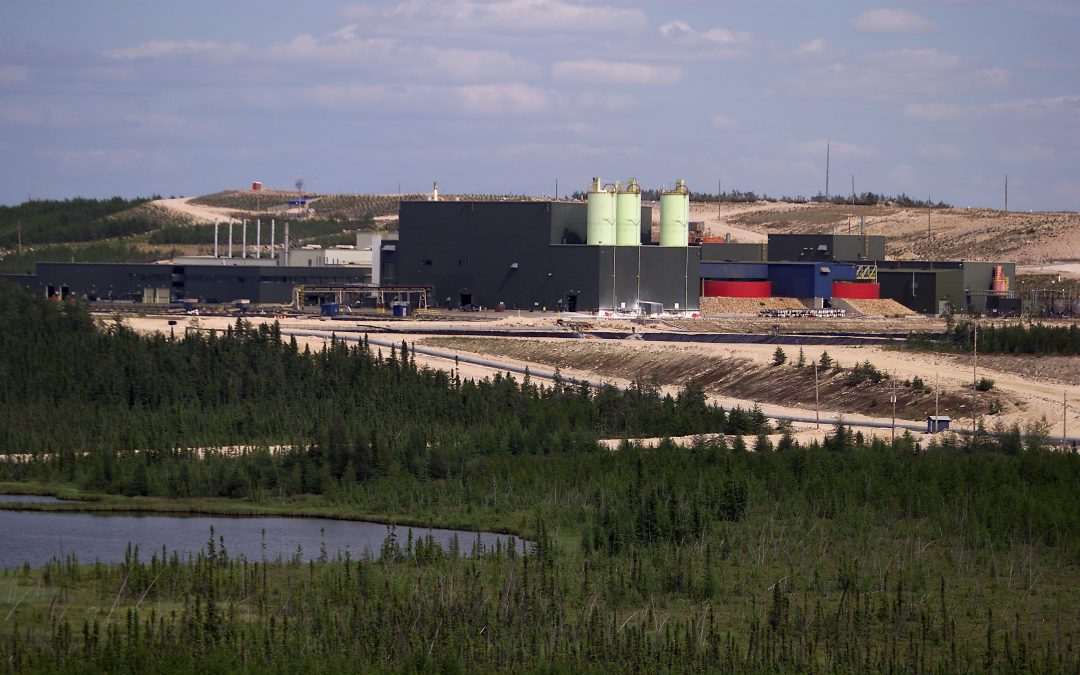An increase in jobs and economic activity will be coming to northern Saskatchewan as Cameco has announced the upcoming restart of uranium production at the McArthur River and Key Lake facility.
The northern uranium company made the announcement during their quarterly conference call on Wednesday morning.
Cameco has put the wheels in motion to re-open the facility for uranium production in 2024. The re-opening is expected to create a total of 900 jobs by 2025. Cameco also says they will continue to work with northern contractors as they have been and are open to exploring even more partnerships as production at the mine ramps up.
“If you followed us you know we have been through some tough times,” Cameco CEO Tim Gitzel told reporters at a press event at Cameco HQ in Saskatoon on Wednesday morning. “We have had to make some difficult decisions at our mine-sites.”
In 2016, Cameco halted operations at its Rabbit Lake mine and just over a year later in December 2017 announced the halting of production at McArthur River/Key Lake.
According to the Saskatchewan Government’s mid-year budget in 2018, the suspension of production at the McArthur River mine was the biggest issue affecting Saskatchewan’s GDP at the time.
“Today I am very pleased to say we are going the other way… which is hopefully good news for the province and is especially good news for the north and Cameco,” said Gitzel.
Impacts on the north
Northern Saskatchewan was hit especially hard with these closures as about 50 percent of Cameco’s workforce in their northern mines and mills were made up of northern residents. Additionally, Cameco says around 80 percent of services provided at their northern sites are purchased from northern/Indigenous-owned companies.
Gitzel says he’s glad to bring several jobs back to northern Saskatchewan.
“We are delighted to be back,” said Gitzel. “We will be producing again, we will be employing people, we will be hiring northern contractors, we will be paying our taxes and royalties to the province, which we are happy to do…it’s just good all around.”
The Cameco CEO says he now plans on speaking with northern leaders shortly about the re-opening.
Saskatchewan Premier Scott Moe joined Cameco at the press event and echoed Gitzels’ comments on the excitement for economic growth the mine re-opening will help make available for northern residents.
“There is a much brighter future ahead for many individuals in northern communities,” said Moe.
The premier also put out a call for global companies to use the uranium produced by Cameco in their operations.
“Because of the way that it is actually produced, from a greenhouse gas emissions perspective, but also because of the engagement and effort a company like Cameco has made, and yes there are others that have made that effort, to employ northern and Indigenous residents here in this province,” said the Premier.
Market favourable for re-opening
Tim Gitzel pointed to a favourable change in global attitudes around nuclear energy that allowed the uranium company to procure the necessary contracts to help the northern mine re-open.
“We said we weren’t going to bring it back until market conditions were right,” Gitzel told reporters. “We signed 70 million pounds in new markets in the last quarter… that’s years worth of production… we are in really good shape.”
Gitzel brought up pro-nuclear policies and infrastructure investments in both the U.S.A and France as evidence of what he believes is a changing narrative on nuclear energy.
“Just a real attitude change toward nuclear,” he said.
According to Gitzel when McArthur River/Key Lake suspended operations in late 2017 uranium had a market value of $17/pound and is now currently sitting at $42/pound.
Cameco’s operations at Cigar Lake have remained open while production at other mines were suspended. With the re-opening of McArthur River/Key Lake, the northern uranium company is expecting to decrease production at Cigar Lake from 18 million pounds to 13.5 million pounds in 2024.
(With files from Dan Jones)
(PHOTO: Cameco’s McArthur River/Key Lake mine operation. Photo provided by Cameco.)
